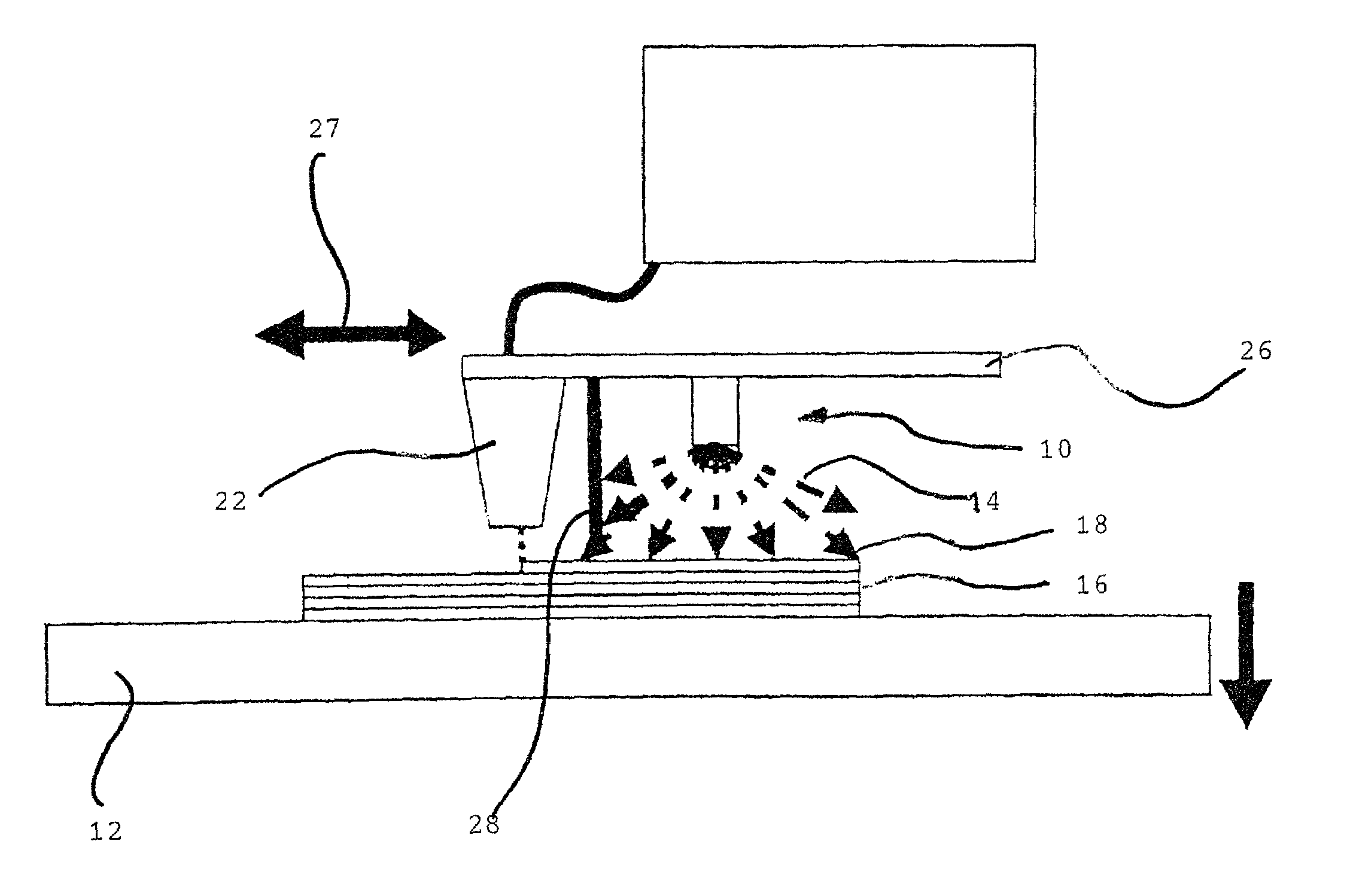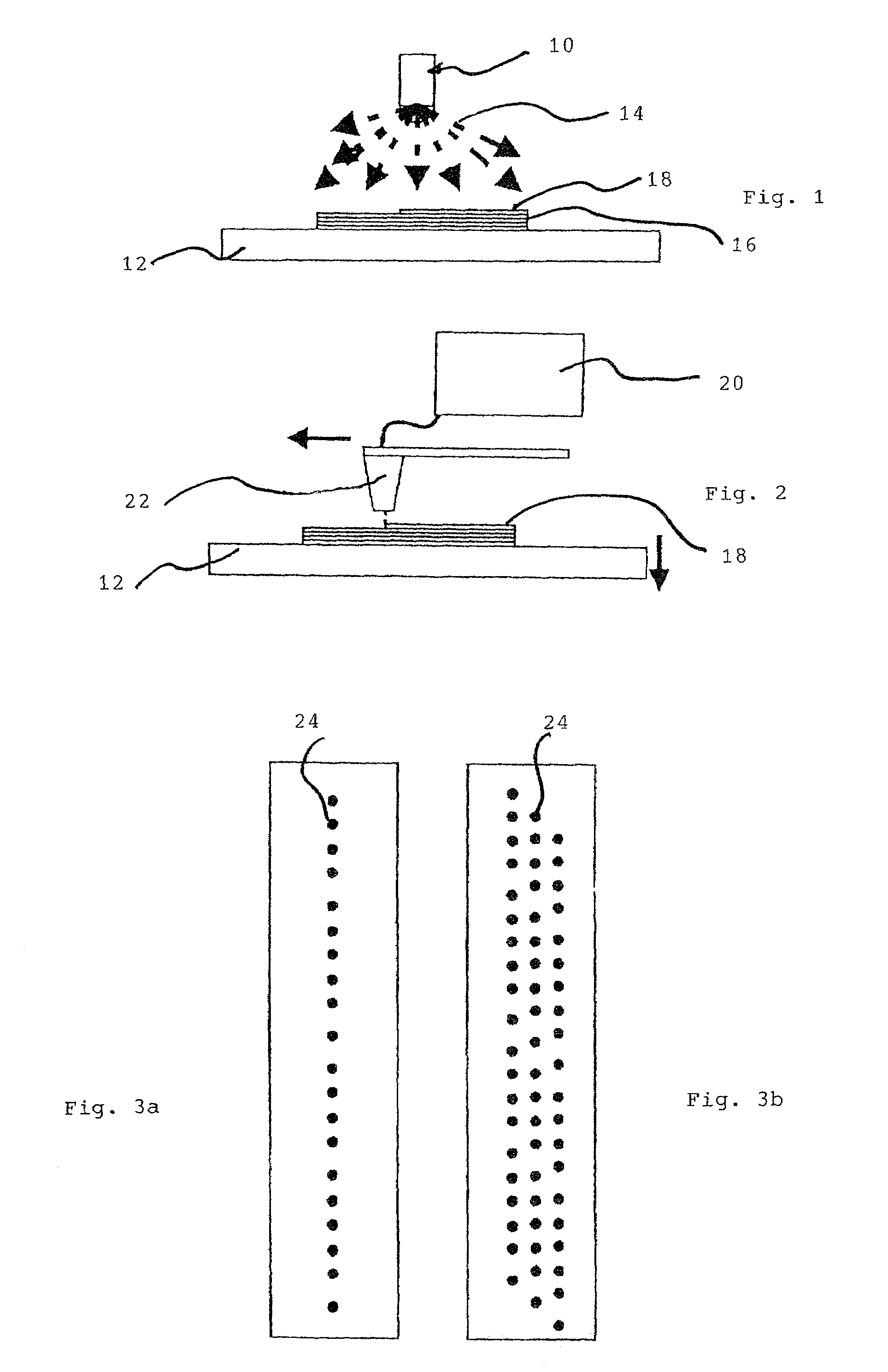Method for producing a synthetic material part
a synthetic material and production method technology, applied in the direction of vehicle route interaction devices, railway components, nuclear engineering, etc., can solve the problems of requiring a considerable capital investment, requiring a relatively long time for the production of an object by this method, and requiring a considerable amount of capital investmen
- Summary
- Abstract
- Description
- Claims
- Application Information
AI Technical Summary
Benefits of technology
Problems solved by technology
Method used
Image
Examples
Embodiment Construction
[0018]A commercially available printer operable for three dimensional printing processes can be used to produce a tooth replacement part in accordance with the method of the present invention, the printer being configured for performing the process developed by Massachusetts Institute of Technology involving the spray application and hardening of a powder material having a binder added thereto, with the method including the steps of applying layers of a polymerization initiator and a wax-like polymerizable substance to a polymerizable dental material comprising a polymerizable monomer or oligomer. The wax-like substance is an ester of an alcohol with a polymerization capable carbon acid derivative.
[0019]After the application of each layer, or after the application of several layers, the printing head having the spray device is blocked off by a black light protection cover which is moved via a linkage on the printing head and is operable to optically separate the printing head from t...
PUM
| Property | Measurement | Unit |
|---|---|---|
| thickness | aaaaa | aaaaa |
| thickness | aaaaa | aaaaa |
| viscosity | aaaaa | aaaaa |
Abstract
Description
Claims
Application Information
 Login to View More
Login to View More - R&D
- Intellectual Property
- Life Sciences
- Materials
- Tech Scout
- Unparalleled Data Quality
- Higher Quality Content
- 60% Fewer Hallucinations
Browse by: Latest US Patents, China's latest patents, Technical Efficacy Thesaurus, Application Domain, Technology Topic, Popular Technical Reports.
© 2025 PatSnap. All rights reserved.Legal|Privacy policy|Modern Slavery Act Transparency Statement|Sitemap|About US| Contact US: help@patsnap.com



